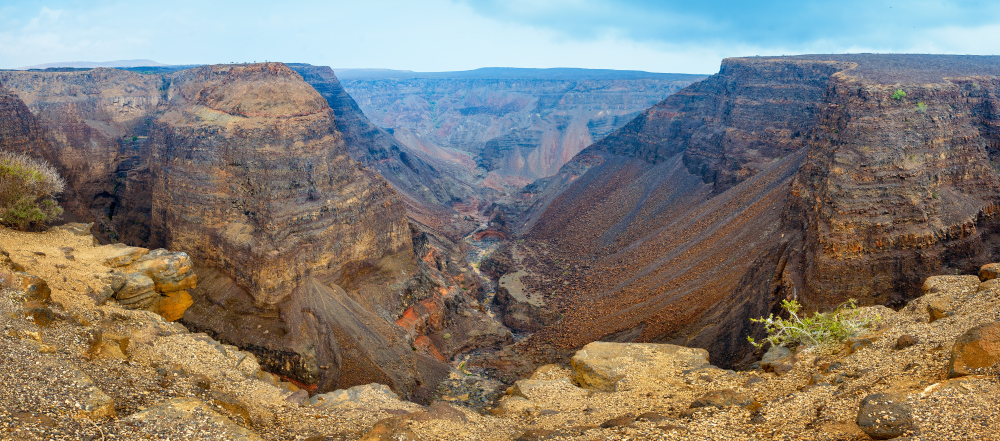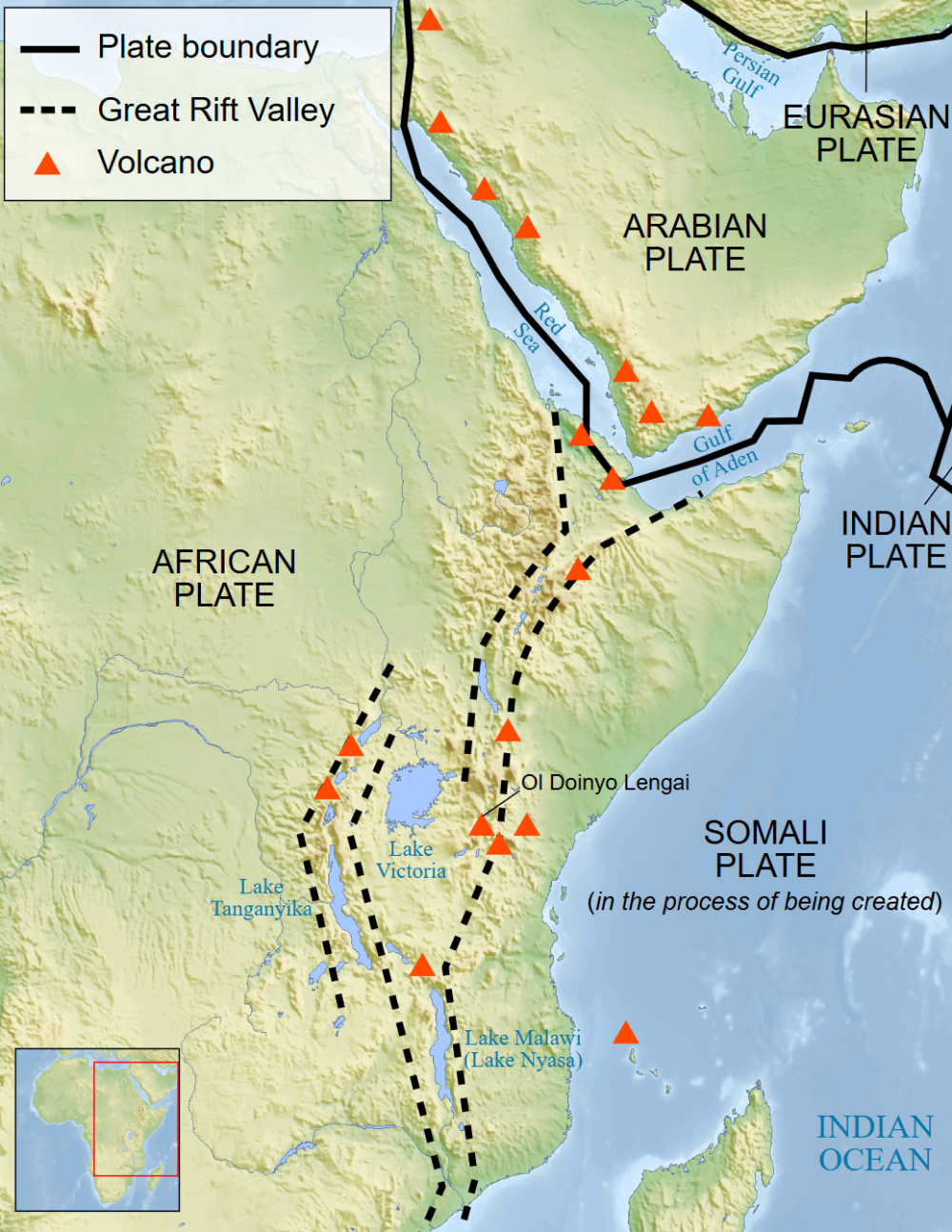When Homo sapiens first came onto the scene, we were just one of several human species walking the Earth. You might imagine that we just sort of popped up one day with a nice, simple, single point of origin, but the true story is a bit more complicated than that.
Our emergence was slow and, as the BBC’s latest series Human with palaeoanthropologist Ella Al-Shamahi reveals, we really weren’t all that impressive in the beginning. It’s thought we popped up across thousands of miles over hundreds of thousands of years, appearing bit by bit across the African continent. So, why is it that Africa’s Great Rift Valley is considered such an important place for understanding our species’ origin story? Well, for starters, it’s an absolute playground for archaeologists.
In terms of the human story, it’s one of the most fossil rich places in the world.
Paul Overton
A fossil bonanza
Stretching over 6,000 kilometers (3,700 miles) from Lebanon in the Middle East down to Mozambique in southeastern Africa, the Great Rift Valley (or East African Rift System) is considered one of the most significant locations on Earth for understanding human evolution. That’s not necessarily because all the action was unfolding here, but because nowhere else has contributed more to our understanding of how Homo sapiens first emerged.
“In terms of the human story, it’s one of the most fossil-rich places in the world, and that’s as a result of the stuff being preserved in the sediments,” said the BBC Science Unit’s Paul Overton, executive producer on Human, to IFLScience. “Sediments have built up at the bottom of the valley, and anything trapped within the sediment has been quite well preserved.”
“Hot countries are the worst for trying to extract DNA, it gets destroyed very easily, but that spot in the Rift Valley has preserved loads of fossils like Omo 1 and Herto 1, the first anatomically modern humans. There’s loads of earlier fossils as well, going back even further in the human story [including the famous Lucy]. It’s just a particularly good area for finds.”

Canyon within the Great Rift Valley.
Image credit: Truba7113 / Shutterstock.com
Homo sapiens vs the climate
Beyond being one of the most fossil-rich regions in Africa, the Great Rift Valley is also incredibly geologically active. It’s an active geological fault line where three tectonic plates are moving away from each other, creating a very dynamic and, at times, turbulent environment.
Africa is like the mothership of humanity.
Paul Overton
This was certainly the case around 275,000 years ago, a time when the climate record tells us the region was experiencing the extremes of climate instability. We’ve been able to trace this pivotal chapter in our story thanks to the climate record preserved in the sediment, and it paints a grisly picture.
At this time, East and West Africa were sitting on a kind of climate seesaw, so while one region was enduring extreme drought, the other saw flash floods. The fledgling modern humans became isolated by these extremes, forcing them to move around and try to innovate novel solutions to new problems. The wild climate swings saw ecosystems collapse, and many communities didn’t make it through.

Map of the Great Rift Valley.
Those that did survive this period of climate instability later came back together, giving them the opportunity to share what they had learned. The struggle could’ve killed off modern humans completely, but instead, it made them stronger, tougher, and smarter.
They’ve only scratched the surface in terms of digs elsewhere.
Paul Overton
There had been a rich diversity of populations in Africa before this period of weather extremes, but the rapidly changing climate acted like a catalyst that sped up the process of evolution, blending groups who interbred to create a new and evolved kind of human. One that was very good at problem solving.
The effect of that change, some argue, can still be seen in our heads today. Important fossil finds at the Great Rift Valley, like Herto 1 that Overton mentioned, show something known as globularization, which is essentially the increasing roundness of the skull. Some have argued that this reflects a change in brain organization that’s been linked to language and coordination, demonstrating a shift from earlier human species towards the unique way Homo sapiens think.
Looking further afield
The Great Rift Valley is a very important region, but it isn’t the whole story. In fact, it’s been argued that there could be a lot more to find elsewhere in Africa, if only other regions had experienced the same conditions that primed the Great Rift Valley for preserving fossils so damn well. Then, there’s also the fact that in some places, we just haven’t been looking as hard.

Herto 1 skull cast alongside other skull fossils.
Image credit: BBC / BBC Studios
“Africa is like the mothership of humanity,” said Overton. “That’s where it all began, and they’ve only scratched the surface in terms of digs elsewhere. You tend to find the centre, and then all the activity, all the attention, goes to that place, but Africa is a complicated place to do archaeology.”
“Conflicts and various difficulties in central and west Africa have complicated things, but I think there’s more interest in looking at other parts of Africa now as well. Central and west Africa might hold much more, we just don’t know because the work’s not been done.”
There are still many questions to be answered in our species’ origin story, some of which we may never get to, but the remarkable fossil record preserved at the Great Rift Valley demonstrates that getting to where we are today hinged on some serious resilience and innovation in the face of a rapidly changing climate. Huh. Sounds familiar, right?
The five-part series Human started on Monday, July 14, at 9 pm on BBC Two and iPlayer in the UK. It premieres Wednesday, September 17, at 9 pm ET/8C on PBS, and will also be available for streaming at pbs.org/nova, NOVA on YouTube, and the PBS App.
Source Link: Why Is The Great Rift Valley So Important In Our Understanding Of Human Evolution?